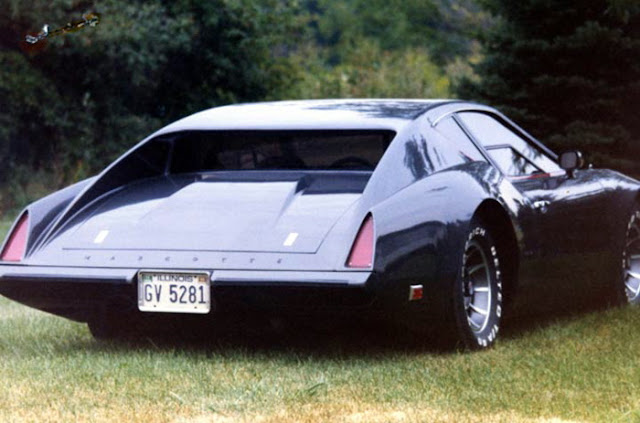 |
David Stollery in his "FireAero"
|
The FireAero was a 3-wheeled kit car with a "2 front/1 rear" layout, not unlike the British Morgan. It was produced in the mid 80's by Industrial Design Research (IDR), a company founded by noted Car Designer David Stollery in Santa Ana, California. However this was actually a part of Mr. Stollery's second career...
 |
The IDR FireAero
|
Actors who leave Hollywood don’t automatically flourish in a second career, especially not "Child Stars", but David Stollery did. First working in film during the late 1940s, Stollery appeared in dozens of movies and TV shows, including many Disney productions, by the time he was 18.
Stollery was most well known for ‘The Adventures of Spin and Marty’ a short western serial set at a summer boys’ camp which aired during Disney’s original “Mickey Mouse Club” show on ABC during the 1950's. Stollery played Marty, a pompous rich kid who eventually befriended the camp’s most popular kid, Spin, played by Tim Considine.
But it wasn’t the first-time young Stollery portrayed a snobby child. He appeared in the black and white sequences at the beginning and end of Abbott and Costello’s 1952 comedy “Jack and the Beanstalk,” reading the bedtime story to Costello that leads to the film’s color dream sequence. He also appeared in the 1956 Disney film “Westward Ho, the Wagons!” starring Fess Parker.
However at 18, he quit Showbiz and enrolled at Pasadena, California's Art Center College of Design. “I started working when I was six years old, became well-known, and was making good money,” says Stollery, of his early career. “I asked myself if this was what I wanted to do with my life and the answer was ‘no.’ I’d always been interested in drawing and design so when I was accepted into the Art Center College of Design, now in Pasadena, I knew I’d made the right decision.”
 |
Toyota Celica Liftback (second generation)
|
 |
Toyota Celica Notchback (second generation)
|
Focusing on automotive design at school, Stollery worked for General Motors in the ‘60s (where he met my Dad) and was then recruited by Toyota to help found CALTY which was to be the company's California design studio, tasked with designing models specifically for the N. American market. Among the most well known of these were the second generation Toyota Celica and its more powerful "Supra" sibling, in its initial guise with an inline 6cyl motor and an elongated wheelbase and extended hood to accommodate it.
Later, he was hired by millionaire Lou Richards to help design the groundbreaking, front-wheel-drive, "Trihawk", three-wheeled sportscar. However, only about 100 of those were produced and, after Richards’ death, another job would lead to the creation of Stollery’s own company, IDR, and its first product offering, the "FireAero".
The "FireAero" was a rather novel conversion kit that changed a normal motorcycle into a side-by-side two seat, three-wheeler, with two wheels at the front. The kit was designed to utilize said motorcycle as a basis for its drivetrain. It was recommended that the motorcycle used should be no less than 750cc and that the rear wheel should be replaced by a 15" x 4.5"/5" rim and automobile tire for better traction. The front forks, wheel, handle bars and saddle had to be removed and the conversion kit supplied a rectangular steel chassis frame, plus a Volkswagen 'Beetle' torsion bar front suspension, a rack and pinion steering box, the complete interior, and the two-piece fiberglass body, the tail section being hinged at the top immediately aft of the cockpit. It also featured "butterfly" style doors, a heater, reverse gear, and a stereo system which were offered as optional extras. There were several Japanese motorcycles that were suitable for this conversion and a change to a larger size was said to present no major problems.
 |
The FireAero chassis
|
 |
The FireAero's bodywork and tub
|
Two versions of the FireAero were ultimately produced; the original air-cooled version using a 750(+)cc motor, and a larger version with an improved and more spacious interior as well as Honda Goldwing running gear. Roughly 30 of the kits were sold, most of which were of the initial type. In 1988, the Company was sold to CAV (Californian Alternative Vehicles) who produced the three wheeler in finished, turn-key form only.
 |
IDR FireAero lineup
|
IDR continued operating as a design consultancy, albeit moving in a different direction. “I had heard through a friend that the State of California was looking for someone to redesign their lifeguard observation towers,” Stollery recounts. “I didn’t know anything about lifeguard towers but came up with a design and they gave me a contract.”
To date, he says his Santa Ana company Industrial Design Research, Inc., has sold over 700 of the modern fiberglass towers around the U.S. and internationally.
 |
| The IDR FireAero, as seen in a 1990 episode of "The Flash". |
 |
| The IDR FireAero (General Arrangement) |
 |
| The IDR FireAero |
 |
| The IDR FireAero |
 |
| FireAero Interior |
 |
| The IDR FireAero |
 |
| The IDR FireAero |



















Comments
Post a Comment